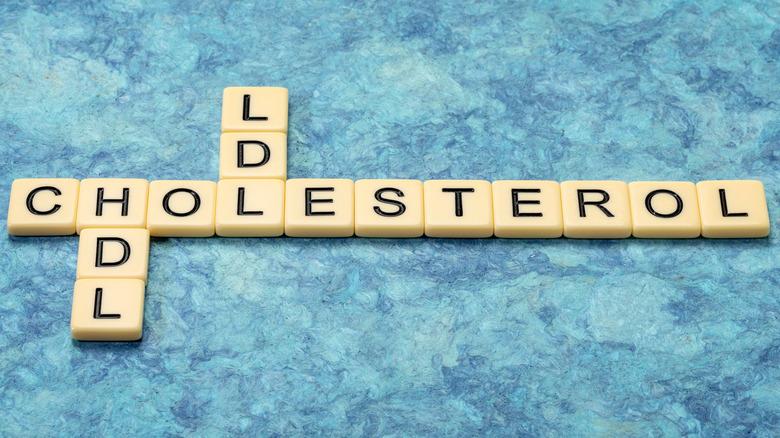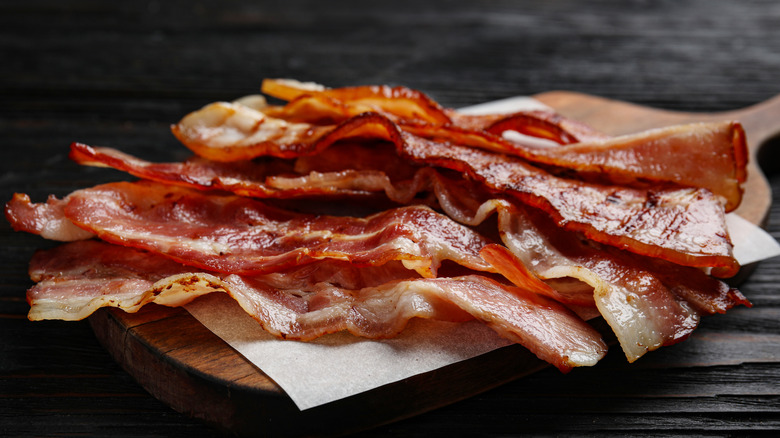The Big Difference Between HDL And LDL Cholesterol
For many of us, cholesterol is firmly on the "naughty" list, right up there with cigarettes and double bacon cheeseburgers. We've all heard enough to know that too much cholesterol can put us on the fast track to a heart attack. However, a closer look shows that labeling all cholesterol as "bad" is an oversimplification. There are two main types of cholesterol — HDL and LDL — and one of them is definitely "good."
Cholesterol is actually vital for proper cell function, the production of sex hormones, and nerve health. Without it, we would be in sad shape. "Just as your car needs oil, your heart and blood vessels need cholesterol," Dr. Christopher Di Giorgio, a cardiologist with Englewood Health, told The Healthy. "Problems arise when the components of your cholesterol are not present in the right quantity and quality." It's not cholesterol per se, but too much of the wrong type of cholesterol, that is hurting us.
Reducing saturated fats can help lower LDL levels
Cholesterol travels through the blood on carrier particles called lipoproteins. There are two main types: Low-Density Lipoproteins (LDL) transport cholesterol from the liver (where most cholesterol is produced) to where it's needed throughout the body. High-Density Lipoprotein (HDL) does the reverse, carrying excess cholesterol from the body's tissues back to the liver, where it is either broken down or passed out of the body (via American Heart Association).
Problems arise when the balance between LDL and HDL becomes skewed. According to Medical News Today, doctors typically want to see lower LDL levels (under 100 milligrams per deciliter), and higher HDL levels (at least 60 milligrams per deciliter). High LDL levels lead to plaque build-up in the arteries and increased disease risk. "A person's cholesterol is the result of genetic factors, which are not modifiable, and dietary and lifestyle factors, which are," Dr. Di Giorgio told The Healthy.
Not smoking, cutting back on saturated fats, losing weight if needed, and exercising all contribute to a healthier balance between "bad" LDL and "good" HDL cholesterol levels.


